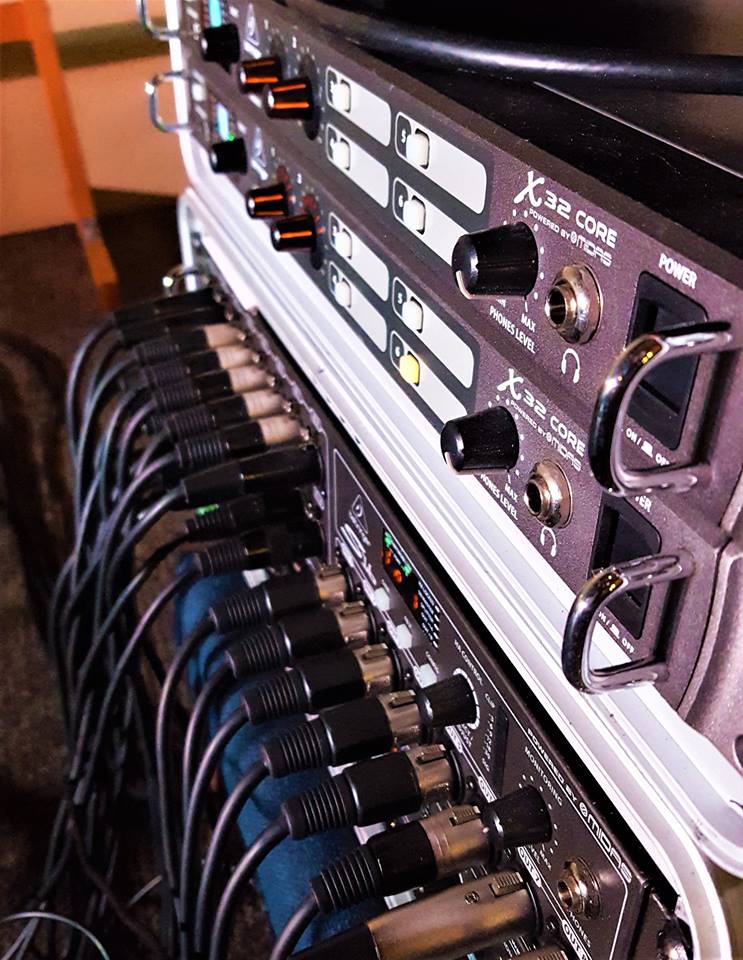Acoustic-o-rama.
Please Remember:
The opinions expressed are mine only. These opinions do not necessarily reflect anybody else’s opinions. I do not own, operate, manage, or represent any band, venue, or company that I talk about, unless explicitly noted.

 Want to use this image for something else? Great! Click it for the link to a high-res or resolution-independent version.
Want to use this image for something else? Great! Click it for the link to a high-res or resolution-independent version.I’ve been asked if I can start writing up gig-logs. Thoughts about shows can be a bit of a touchy subject; When things don’t go well, folks can think they’re getting the blame. At the same time, treated carefully, there’s likely to be a wealth of teachable moments packed into any retrospective of a production.
So, yeah – let’s give this a try!
What Went Well
- Advance information was key: I knew beforehand that I would have a healthy number of inputs and monitor mixes to contend with – AND that most of the heavy lifting would be done with instrument mics. Not having to figure things out at the last minute made life much smoother.
- Lessons learned from others’ experiences are helpful: One of the best pieces of advice I’ve gleaned regarding “instrument mic” shows is that you should be very, very wary of making monitor world too loud right out of the gate. Start quiet, and then add on as needed. I’m pretty sure this concept saved my butt later. (I think this concept is true for every kind of show, actually, but shows with a lot of mics will kill you much faster if you forget.)
- Build the show file at home: As per my usual, I walked into the space with a USB stick that had basic FOH and monitor-world console configurations preloaded. As soon as I was ready, I called up my scenes. I was then in a place where I could make “grab-n-go” tweaks without having to look at every parameter on everything. Having your routing, scribble strips, high-pass filters, channel compressor ratio/ timing parameters, and basic monitor-bus EQs in place will save you a LOT of time at the show.
- Save your back: Putting the digital stagebox on a chair was one of the best ideas ever. I didn’t have to bend all the way down to interact with it, which was a lot faster and a lot more comfortable than the alternative.
What Could Have Been Better
- Perishable skills are perishable: It took me a minute to get my head re-wrapped around thinking about two separate consoles that have to be recalled individually. I haven’t had to do that since the summer, so I’m out of practice and a little slow. I also tend to forget that acoustic instruments have solid output, but also tend to be farther from a mic than a “rock” vocal. Consequently, you have to be willing to get on the gas a bit more if folks really want to hear the monitors. If you haven’t done this kind of work in a while, you might be a bit surprised.
- Scheduling is hard: I gave myself four hours to load-in, power, set, and line-check an 18 input show with five monitor mixes, a “double-hung” PA, and two light trees driven with DMX. I just barely got to “soundcheck ready” in time. I need to spec more of a setup buffer when I’m flying solo.
- Almost but not quite: I’m used to being able to grab a direct-input instrument and put it confidently front and center when a solo comes up. With miced instruments, I have to be more ginger. Certain lead parts didn’t pop out in quite the way I had hoped.
- That wall, though: The room is actually pretty okay, but I can’t say I’m a fan of the big, blank, flat wall right behind the stage as an acoustical feature.
Conclusion
The show came off well, with an appreciative crowd and musicians who seemed pretty happy when it was all said and done. I call that a win!